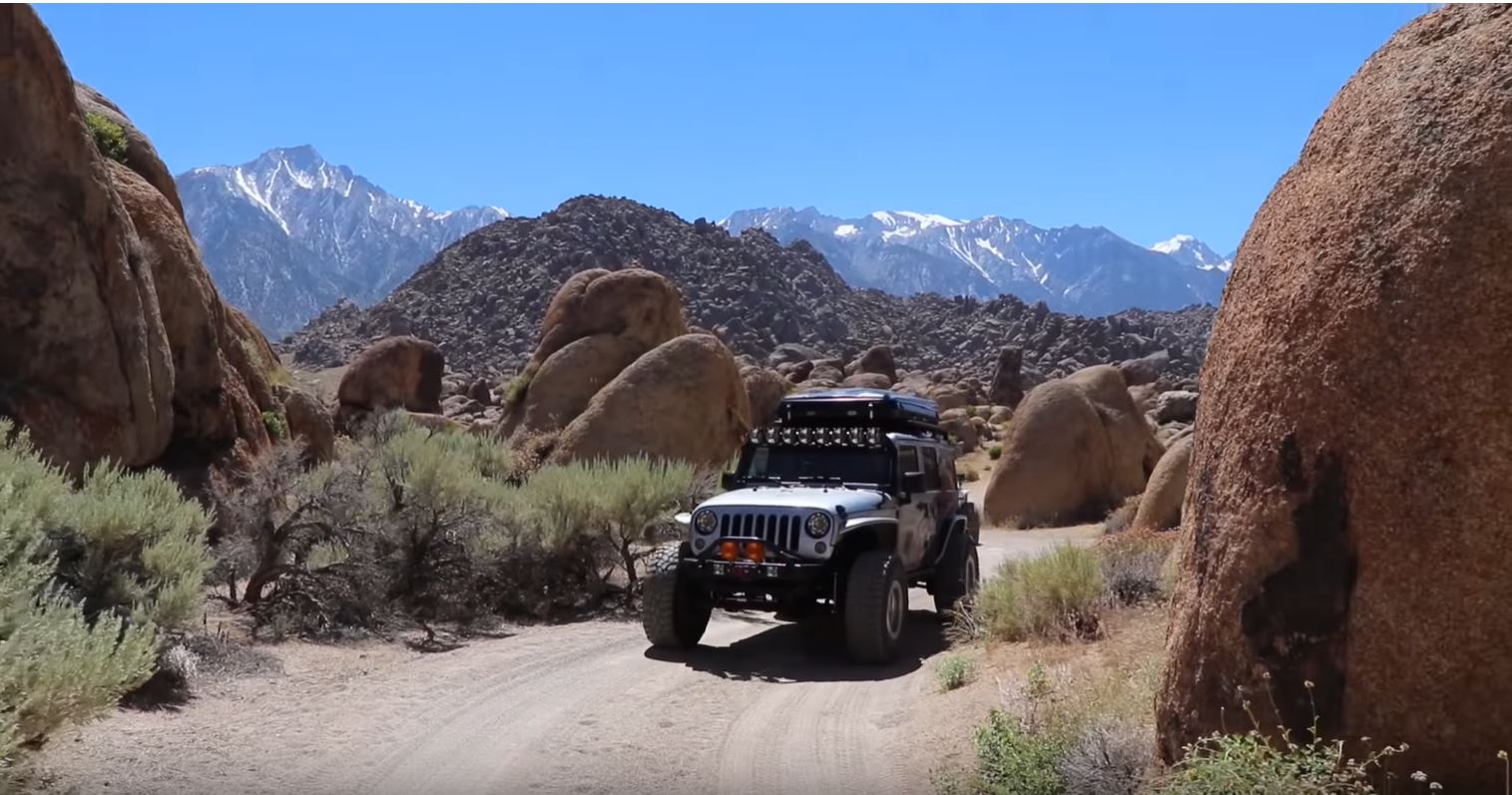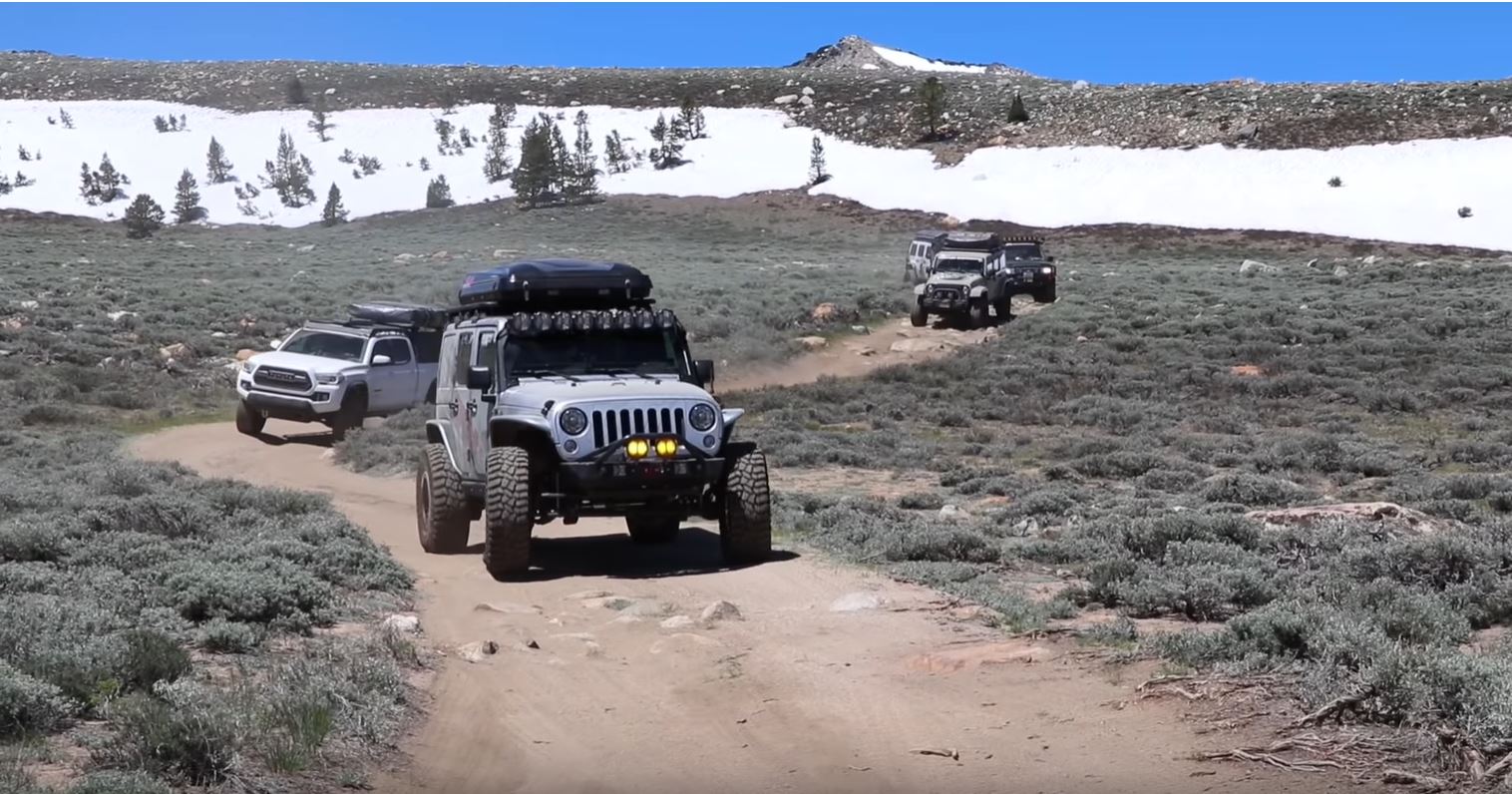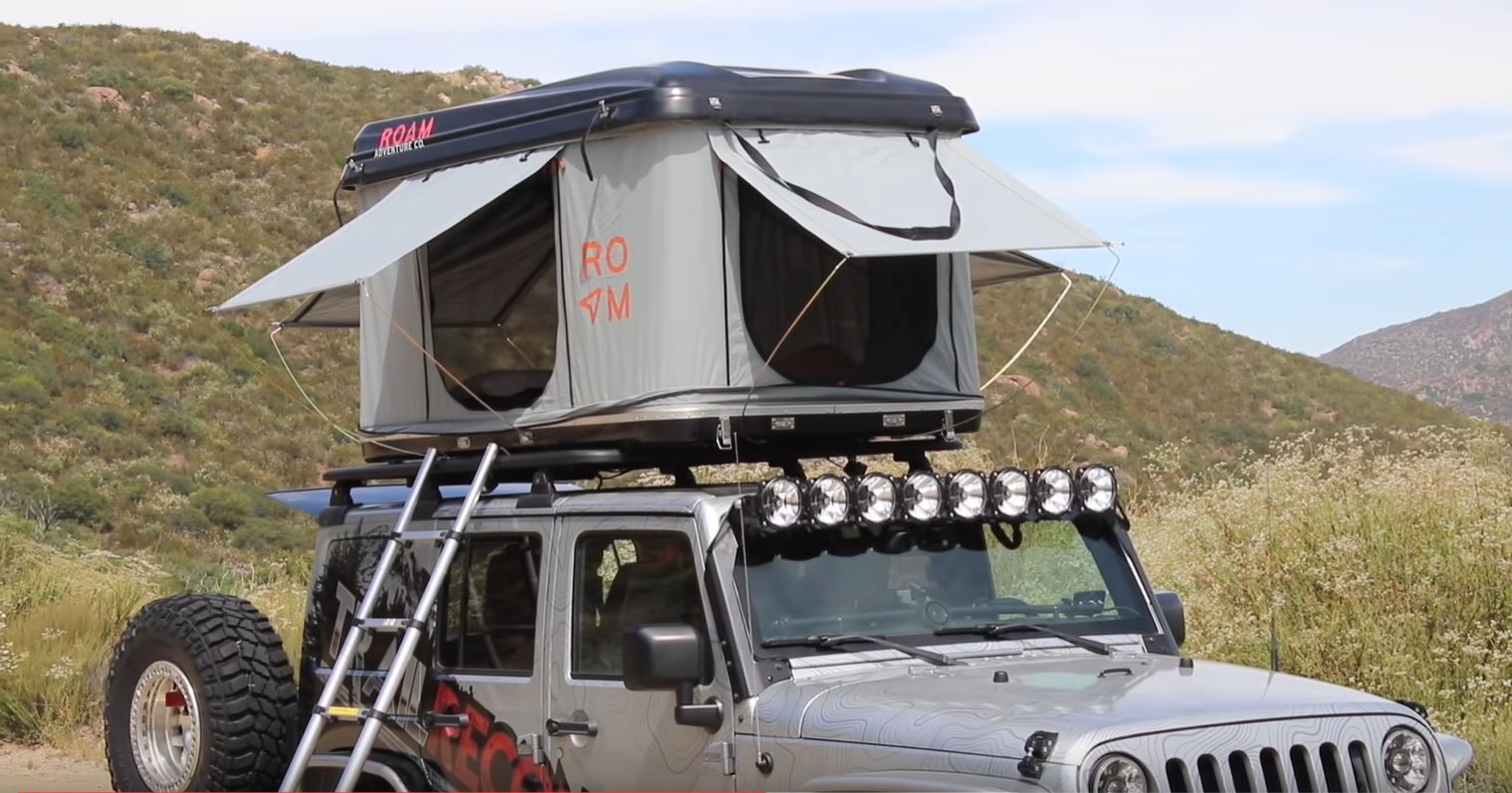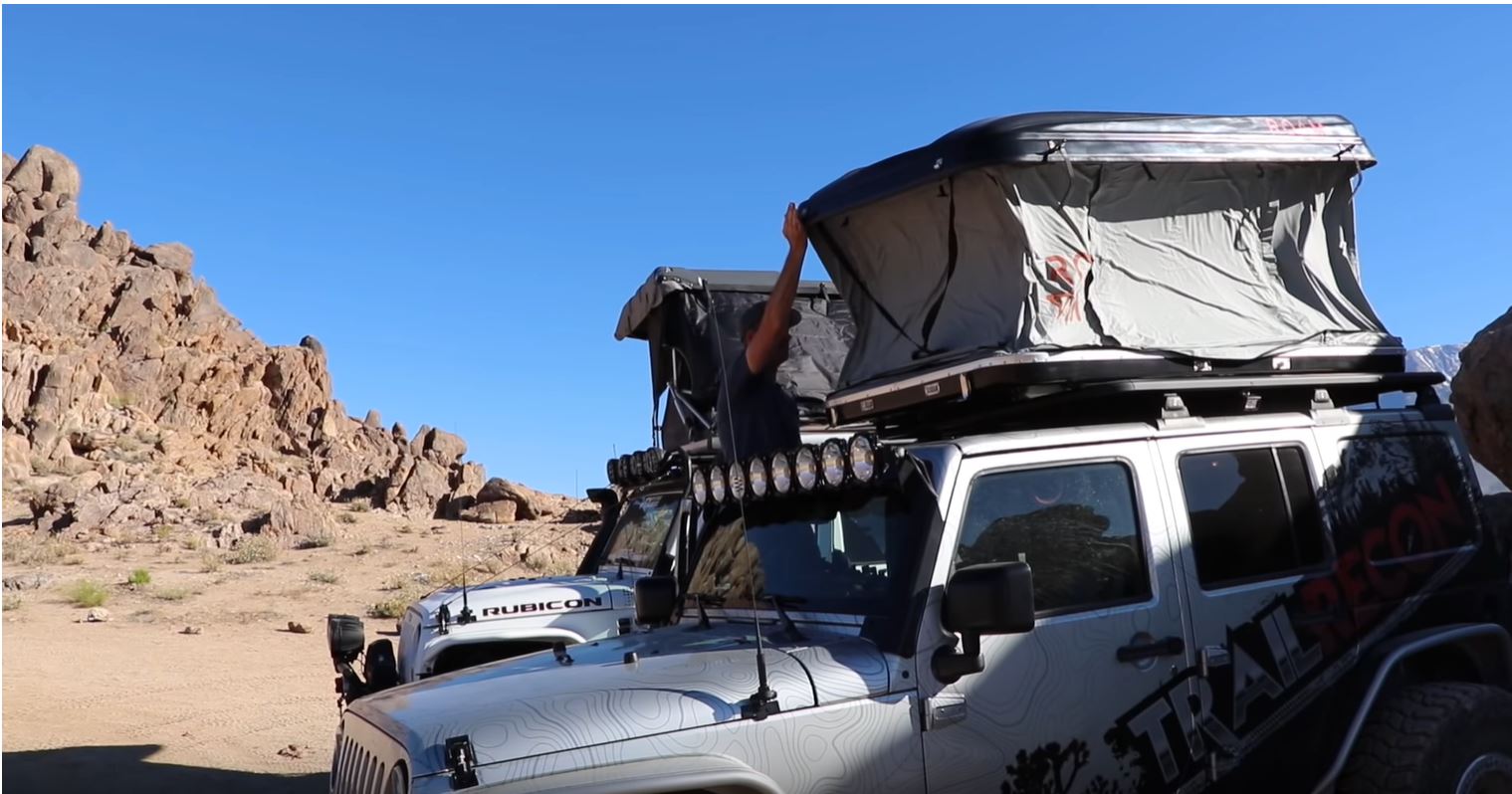Why Camping With a Jeep Hard-Shell Rooftop Tent Is a Boss Move
Wondering if adding a hard-shell rooftop tent to your Jeep build is worth it? YouTuber TrailRecon is here to clear all that up.
Opening the video by stating, “This is one of the most frequently asked questions on the channel,” Brad from TrailRecon heard the cries of his followers and got a hold of a hard-shell rooftop tent (RTT) to be able to answer that question honestly. Therefore, after four months and some change of use on trails and varying weather conditions, Brad released his very informative opinion to the cyber-verse.
As seen on his YouTube channel, he specializes in off-road vehicles and accessories. So, logically speaking, Brad is definitely the type of guy to ask this question. Lucky for both Brad and his viewers, Roam Adventure Co. loaned his a prototype of their latest created, the Rambler Hard-Shell RTT. Before equipping his tricked out Jeep Wrangler with the hard-shell RTT, he’d been a long time user of the traditional “soft-shell” RTTs. So, testing out the Rambler was a new adventure for him.
First thing he said in his video was that he very much appreciates the sleeker, more refined look of the hard-shell RTT on the top. Brad mentioned that the soft-shell RTT looked and felt more like a brick sitting atop his Jeep, and loved Rambler’s look a lot more. However, he did note that the hard-shell RTT weighed 165 lbs – a notable increase from his previous RTT. Though, a reduction in wind noise and drag more than made up for that. A notable downside to the Rambler’s weight is this: more weight on top means the Jeep is now more top heavy, which can make tricky trails just a tad trickier in comparison to Jeeps without the additional weight.

“It’s a little heavier than I’d like, I’ve noticed the extra weight,” said Brad. “I’d prefer a lighter tent, though it’s worth the compromise for the quality of this tent.”
In addition to it being a little more heavy, he said that it felt a lot sturdier than the soft-shell RTT felt. It measure to 81 inches in length, 48 inches in width, and 11 inches tall when it’s folded down. So, as it’s sitting on top of the Jeep, it’s a lot shorter. Though, Brad said he’s still not able to park in his garage. But he has a four and a half inch lift and 37″ tires to thank for that. The Rambler prototype that Brad fit to his Jeep was black, though Roam Adventure Co. told Brad that later on, they want to offer the Rambler in “automotive colors.” Even to Brad, it’s not totally clear as to what that means.
The dimensions of the tent means that inside the tent, it’s fairly roomy. And Brad agreed wholeheartedly. In fact, as a six foot two man, he’s able to fit inside the tent with plenty of room on all sides of the tent. He also added that he’s able to take his son, who happens to be six foot four, and both sleep fairly comfortably in the tent thanks to a three inch thick luxurious mattress. Underneath the comfy mattress happens to be a reliable condensation resistant layer that wards away moisture even when the tent is open.
Only downside within the poly-cotton “walls” is that the interior hinges do stick out a fair amount. So, he and his son were bumping into them quite a bit. But rest assured – alone, Brad says he doesn’t usually come in contact with them. Roam also reassured Brad that in later production, they planned on covering the interior hinges with a softer fabric, to avoid discomfort should that happen. Another small, but cool bonus is that he’s able to leave all of his pillows, blankets, and sleeping bag inside the RTT while it’s closed up.

Brad says there’s a lot he really likes about the hard-shell RTT when comparing to a soft-shell. One of the biggest advantages was set-up and breakdown times. thanks to gas struts and the earlier mentioned interior hinges.

He also stated it’s a lot easier for him to get in and out of, even with a ladder he can’t properly attach due to his choice in roof rack. He really enjoyed the waterproof and mold-resistant elements in the sturdy walls, and loved the addition of little “awnings” over the “windows” that were held by metal poles.
“Climbing in the tent is really easy. You can access it from all four sides,” added Brad. “There are large screen doors on each side, which a really nice feature.”
“Opening and closing this thing? Man, it makes it really nice. When I’m at camp and I’ve had a long day driving, I love being able to throw it up and be done with it – no problems,” beams Brad. “In the morning, if you’re trying to bug out quickly, you can close this thing up really fast.”
To demonstrate how quick set up was with the Rambler, he timed a normal paced set up run. When finished, it only took Brad an impressive 54 seconds. He said that it definitely felt faster and simpler than the traditional RTT, especially since there wasn’t a cover he had to try and fit back on. The ladder that comes with it is lightweight, telescopic, and comes in a bag for easy storage – which is unlike his previous set up. This, to Brad, was a huge advantage of the hard-shell RTT. Only downside to breaking down the Rambler was the metal poles that held up the awnings. Other than that, definitely felt faster than the soft-shell.

All in all, the list of things he didn’t like was very short. He loved the excellent ventilation, ease of setup and breakdown, sleeker look and weatherproofing. He also loved the space inside the tent, and the excellent attention paid to camper comfort with the mattress and condensation resistance. Only thing he mentioned was a steep price difference, added weight, and less accessories.
A traditional RTT can run between $800-1,200. The Rambler, though, costs a jaw-dropping $2,299. Though, as Brad thoroughly showed, you definitely get what you pay for. Accessory wise, a soft-shell RTT can come with a longer awning that actually covers the ladder or a shoe bag (something Brad missed about his traditional RTT), or can even come with an extension that becomes a separate “room” to change or even shower in. What’s better for a camper depends on wallet capacity and preference.
Photos: Screenshots
